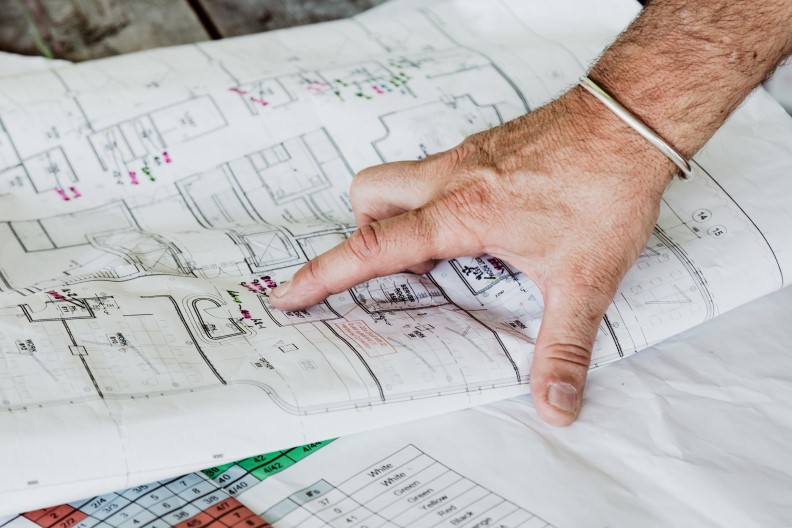Improving Ventilation Airflow with Demand Control Ventilation (DCV) Upgrades in Existing Buildings

The design process for demand controlled ventilation is covered in depth by Ashrae standards and building codes from around the world. However, a special approach is required when DCV is used in existing buildings. Since there is already a ventilation system in operation, the design process must determine how it will be enhanced with DCV functions. This is very different from designing new HVAC systems, where DCV can be integrated from the start.
The complete replacement of a ventilation system is possible, but the project can become very expensive. On the other hand, by using as many existing components as possible, the system can be upgraded with DCV at a minimal cost.
Since DCV requires modulation of the outdoor air supply, variable air volume (VAV) systems are simpler to upgrade. A VAV system already has the capacity to modulate airflow, and it must only be upgraded to respond to occupancy sensors to account for CO2 concentration. This is typically achieved by measuring carbon dioxide, and building codes normally require CO2 sensors. On the other hand, a constant air volume (CAV) system has a fixed airflow, and must be converted to VAV before using demand controlled ventilation.
Does DCV Require a Fan Motor Replacement?
A fan motor replacement is not always necessary in a DCV upgrade, but it is strongly recommended. Older installations often have fan motors with a lower efficiency than those currently available. High efficiency motors can achieve synergy with demand controlled ventilation:
- The DCV system, which has an in-built CO2 sensor set, optimizes the outdoor airflow according to CO2 concentrations (measured in ppm CO2), to reduce the workload on fans.
- If the fans are driven by efficient motors, the watts consumed per cfm are reduced.
As of 2019, NEMA Premium is the highest motor efficiency under North American standards, while the IE4 Super Premium efficiency applies internationally (IEC standard). Each rating covers a different range of motor capacities: NEMA Premium covers motors from 1 to 500 hp, while the IE4 rating covers from 0.12 to 1,000 kW. In other words, the IE4 rating covers a wider range of motor capacities.
Fan motors in ventilation systems often have extended operating schedules, and even a minor efficiency gain can yield significant savings. For example, an energy efficiency increase from 90% to 92.5% may seem small, but in terms of motor losses this represents a 25% reduction.
Original equipment manufacturer (OEM) motors are the best option to upgrade existing air handlers and other ventilation equipment. OEM motors and parts are the same components used by the equipment provider during factory assembly. Therefore, they offer guaranteed compatibility and a simpler installation. The use of OEM components also preserves equipment warranties.
Deploying DCV in Single-Zone and Multi-Zone Ventilation Systems
DCV is easier to implement in single-zone installations, since there is a single airflow value involved. In this case, the OA flow rate is determined by the needs of a single zone. The ventilation design is more challenging in multi-zone installations, since the DCV system must provide the sum of all individual OA flow rates.
In a multi-zone ventilation system, the highest efficiency is achieved when the DCV system has control over individual air dampers. The static pressure drop caused by dampers increases as they close, put DCV can optimize damper positions and fan speed to improve energy efficiency. Ideally, the system should reach the following operating condition:
- The fan is running at the lowest possible speed.
- The dampers are as open as possible, to minimize pressure losses.
- All zones are getting the ventilation airflow (cfm) they require.
- When at least one damper reaches the fully open position, the fan has reached its lowest possible speed.
- If the fan is slowed down further at this point, the airflow will be insufficient.
This strategy is called dynamic reset, and it allows the highest possible efficiency when DCV systems are applied in a multi-zone system. However, this ventilation strategy requires direct digital control (DDC), where a computer has access to the air handler fan and all associated dampers.
Conclusion
The challenge of implementing DCV, according to ASHRAE standard 62.1 and 62.2, in an existing property varies, depending on how the current HVAC installation is configured. In general, DCV is easier to deploy in variable air volume systems, compared with constant air volume systems. Also, DCV systems for single-zone installations are easier to configure, while those for multi-zone installations must account of the individual airflow requirements of each zone.
Related articles: